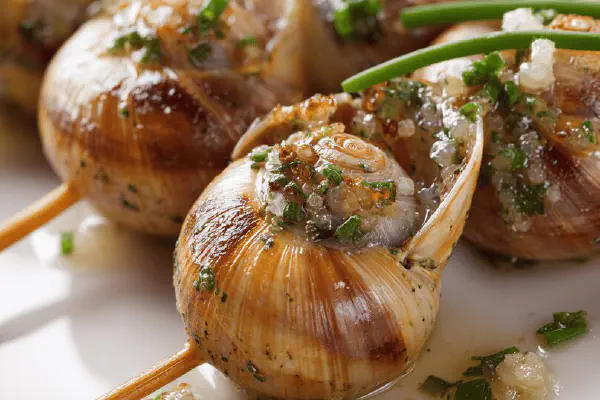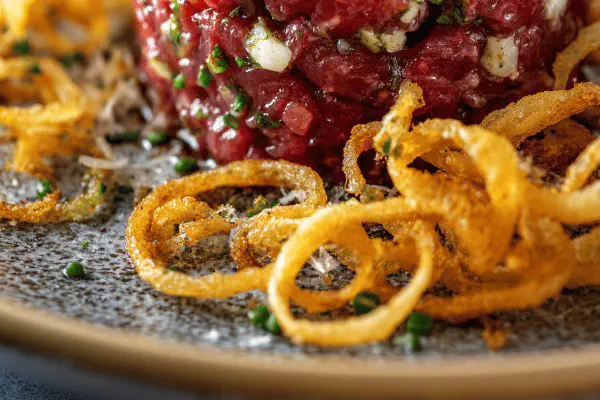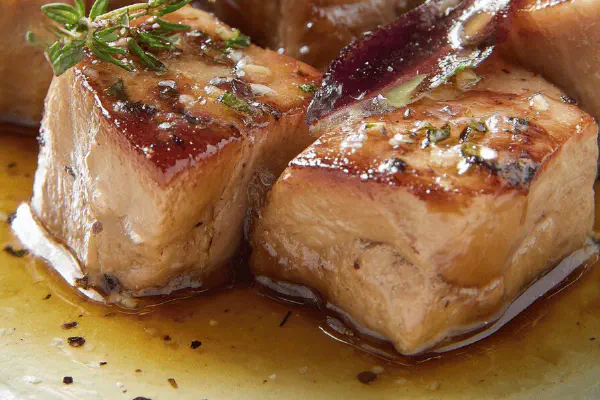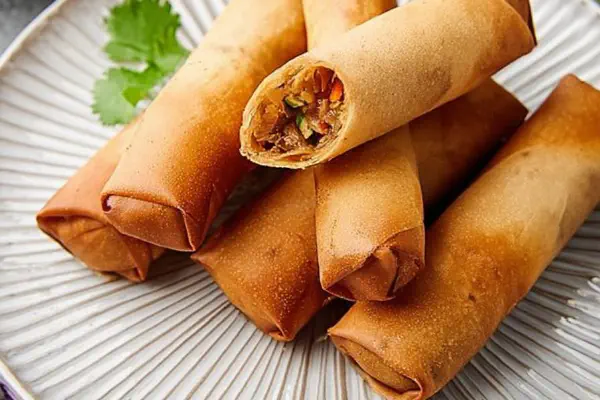Cognac Foie Gras Pots
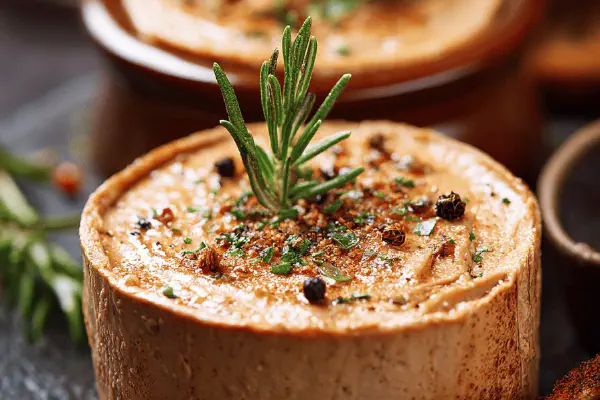
By Emma
Certified Culinary Professional
Ingredients
- 2 escalope pieces raw foie gras around 100 g (3.5 oz) each
- 3 ml (⅔ teaspoon) palm sugar
- 3 ml (⅔ teaspoon) pink Himalayan salt
- 10 ml (2 teaspoons) Armagnac
- 2 Mason jars 125 ml (½ cup)
About the ingredients
Method
- Thinly slice foie gras, place in glass container.
- Mix palm sugar and pink salt, sprinkle on both sides of liver slices.
- Drizzle Armagnac over livers, cover container with plastic wrap.
- Let marinate about 25 minutes at room temp until liver softens.
- Drain and pat slices dry with paper towel.
- Press one slice per jar, cut if needed to fit snugly.
- Seal jars tightly.
- Place jars in saucepan, add boiling water until three quarters up the sides.
- Cover saucepan, remove from heat.
- Let sit about 45 minutes until jar interiors reach about 57 °C (135 °F).
- Carefully remove jars, let cool to lukewarm.
- Refrigerate minimum 24 hours before serving.
- Serve with cracked black pepper if liked.
- Keep refrigerated, consume within one week unopened.
- Once opened, eat within 48 hours.
Cooking tips
Chef's notes
- 💡 Start with fresh foie gras. Quality matters. Check for discoloration. Look at the veins. Slice thick, around 1 cm. This helps shape when pressing into jars. Salt and sugar mix? Sprinkle evenly. Palm sugar takes time to dissolve. But flavor develops beautifully. Marination time critical. Don't exceed 25 min. Otherwise, texture negative.
- 💡 Pressure is key. After marination, pat dry carefully. Remove all excess moisture. Otherwise, jars won't seal properly. Excess liquid? It dilutes taste. Press slices into jars methodically. Avoid air pockets. Tight fitting is what you want. Sealing jars firmly, but without force. Too much pressure? Risk cracking glass.
- 💡 Water bath step is crucial. Use boiling water, remove from heat. Don’t put jars in boiling water directly. Keep jars above waterline. This controls cooking, no sudden temp changes. Lid on jars important. Keep it covered with a lid, prevent water ingress.
- 💡 Cooling phase needs patience. Cool jars gradually. No rush to fridge. Immediate cooling can alter texture. A minimum of 24 hours in refrigerator is non-negotiable. Longer wait? Flavor melds better. Serve cold. Option for fresh black pepper? Recommended, but not essential. Just a touch.
- 💡 Shelf life limited. No preservatives here. Unopened? Keep it cold for about week. Once opened, eat in 48 hours max. Safe storage needed. Trust refrigeration. Quick spoil results from improper handling. Use good quality ingredients. Focus on palm sugar, Armagnac for best results.
Common questions
How to tell if foie gras is fresh?
Color bright, creamy appearance. Check for smell, natural should be pleasant. Avoid any off or sour scent. Inspect for veins—less is better. If too many visible, move on. Thickness also matters.
What if I can't find Armagnac?
Brandy can substitute but flavors different. Not as robust. Other options? Calvados, though, a fruitier twist. Or even whiskey in small amounts. Just adjustments in marinate times might be necessary.
What's the best way to store this dish?
Keep in fridge. Unopened? Up to a week. After opening, consume quickly, within two days max. Sealed jars are critical. No air should get in. Check for any signs of spoilage.
How do I serve it best?
Serve straight from fridge, cold. Black pepper makes a difference. Fresh cracked preferred. Bread, crackers pair nicely. Try alongside fruit compote for contrast. Presentation? Use small plates for rustic appeal.
